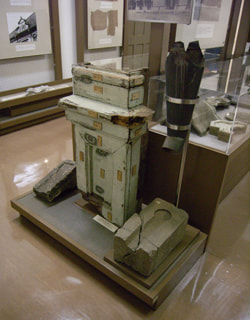
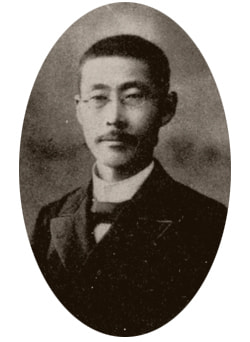
Names of Hanroku Yamaguchi and Masamichi Kuru are listed in a government gazette issued on May 15, 1890, as the designers of Tokyo Music School. Yamaguchi (1858-1899) was born in the family of the Matsue domain's lord. He studied at the École Centrale Paris, and then became an engineering official of the Ministry of Education. He designed some buildings, including the main building of College of Science of Tokyo Imperial University which was destroyed by the Great Kanto Earthquake. However, he died young of illness.
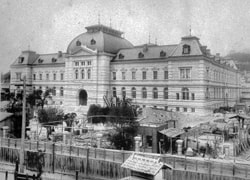
The former Hyogo prefectural government building designed by Yamaguchi was completed in 1902, which followed the modern French Renaissance style. The building was restored to its original state, and is currently opened to the public as the Hyogo prefecture guest house.
Q: We have heard that Taito City was largely involved in and contributed to the preservation of Sogakudo. How and why was Sogakudo preserved?
Kondo: Sogakudo got so old because it had been nearly 100 years since its establishment. If the building was left as it was, damages on the building got worse. So an accord stipulating that Sogakudo would be relocated and reconstructed in the Meiji village was made. However, the Architectural Institute was strongly opposed to the relocation plan, saying that, since it was the venerable building, it should be preserved at the original site. The institute submitted such a written request to the Minister of Education, the Director-General of the Agency for Cultural Affairs and the president of the Tokyo National University of the Arts (Geidai). Seven people, including Yasushi Akutagawa and Toshiro Mayuzumi, who are both alumni of Geidai, joined the opposition movement. In order to promote the movement strongly, a group called "Sogakudo wo Suku-u Kai" centering on musicians was created in February 1980. About 1,700 people subscribed their names to the petition.
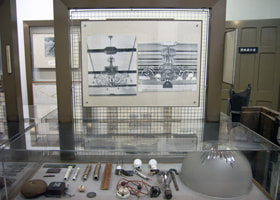
Chandelier used in Sogakudo
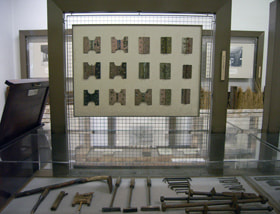
Various hinges and materials
Meanwhile, Eiichi Uchiyama, the mayor of Taito City, wanted to enrich the city's cultural administration. However, the city had no connection with Geidai. At the time, Geidai had trouble dealing with Sogakudo, and intermediation of Taito City was called for. So Taito City offered a plan to relocate and reconstruct Sogakudo in Sumida Park. Geidai was really pleased with the plan. The president of Geidai and the dean of the department of fine arts also agreed with the plan. Taito City explained the plan to Suku-u Kai in September.
However, Toshiro Mayuzumi said, "Sumida Park is not so different from the Meiji village. If we make a major concession, it should be reconstructed in Ueno Park." He never agreed with Taito City's plan. Therefore, Taito City decided to petition the governor of Tokyo for the reconstruction of Sogakudo in Ueno Park. The governor said, "Sogakudo is a matter of the country." The Tokyo Metropolitan Government declined the petition politely, chiefly, because the government just invited the United Nations University to set up its quarters in Aoyama. However, the governor said, "I can understand your feelings, so continue to cooperate with you." On the other hand, since the Ministry of Education and Geidai thought that the Sumida Park plan was easier to carry out, the administrative bureau head of the Ministry of Education asked Uchiyama, the mayor of Taito City, for harmonizing opinions among the members of Suku-u Kai.
The ministry intended to pay all the reconstruction expenses and entrust the management to Taito City. Then, a five-way meeting, including the Ministry of Education, the Tokyo Metropolitan Government, Taito City, Suku-u Kai and Diet members, was held at the Members' Office Building of the House of Councillors.
However, Mayuzumi still stoutly opposed to the Sumida Park plan. Although Akutagawa acted as if he agreed with the plan, a consensus was not reached in the end. (continued in the right column)
The agreement was settled as follows: Article 1 - Sogakudo is designated as an important cultural property. Article 2 - The Ministry of Education carries out the reconstruction, and Geidai maintains and preserves Sogakudo while paying careful attention to disaster damage prevention. Article 3 - Sogakudo is permitted to be set up as an education facility under the Urban Parks Law. Article 4 - The use of the music hall and exhibitions of music materials are open to the public.
However, in April, the Ministry of Education began to say that the ministry could not pay money for the public education facility. So the president of Geidai asked Taito City for taking care of the money somehow. Uchiyama, the head of Taito City, was surprised when he first heard of it. However, he said that Taito City would take care of it, thinking that the city initially intended to pay the money when saying that Sogakudo could be reconstructed in Sumida Park so it reverted to the first situation. Then, after obtaining the permission of the Governor of Tokyo, the body which would carry out the reconstruction was changed from the Ministry of Education to Taito City, and the operating body was also changed to Taito City.
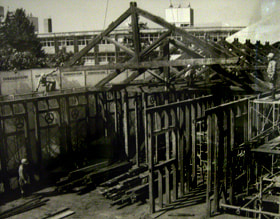
Picture of relocation and reconstruction
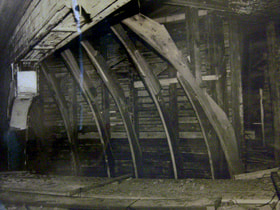
Framework of hall's domed roof

Materials used for Sogakudo

Names of Hanroku Yamaguchi and Masamichi Kuru are listed in a government gazette issued on May 15, 1890, as the designers of Tokyo Music School. Yamaguchi (1858-1899) was born in the family of the Matsue domain's lord. He studied at the École Centrale Paris, and then became an engineering official of the Ministry of Education. He designed some buildings, including the main building of College of Science of Tokyo Imperial University which was destroyed by the Great Kanto Earthquake. However, he died young of illness.

The former Hyogo prefectural government building designed by Yamaguchi was completed in 1902, which followed the modern French Renaissance style. The building was restored to its original state, and is currently opened to the public as the Hyogo prefecture guest house.










